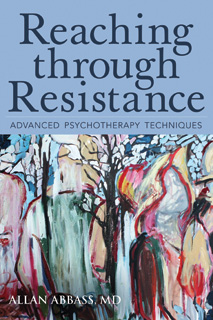What Is Intensive Short-Term Dynamic Psychotherapy?
Intensive short-term dynamic psychotherapy (ISTDP) is a form of psychotherapy developed by Dr. Habib Davanloo of McGill University, taught in training programs worldwide, and actively researched and taught at the Centre for Emotions and Health in Halifax, Canada.
Interruptions and trauma to human attachments cause a cascade of complex emotions that may become blocked and avoided. When later life events stir up these feelings, anxiety and defenses may be activated. This basic finding was derived from a large case series by Davanloo in the 1960-70s.
The anxiety and defenses may be totally unconscious to the person experiencing them, and the result is ruined relationships, physical symptoms, and a range of psychiatric symptoms. A major proportion of all patients with anxiety, depression, substance abuse, and interpersonal problems have this emotional blockage.
These unconscious processes can lead to negative health effects in every system in the body, including the gastrointestinal tract, cardiovascular system, respiratory system, immune system, muscular system, and skin. The anxiety and defenses can lead to increased worry about the body and negative interactions with the healthcare system. Additionally, these problems can lead to disability and depression secondarily.
The treatment approach of ISTDP, as designed by Davanloo, is first to acquaint the patient with these unconscious processes and then to help the patient overcome the emotional blocking processes. This often means focusing on the feelings the patient has in the office during the interview and pointing out the ways the patient blocks off both the emotions and the connection with the therapist in treatment.
When these feelings are experienced, tension, anxiety, and other physical symptoms and defenses decrease abruptly. The patient and therapist can then see the driving emotional forces that were being defended. Thereafter, a healing process may occur in which the old avoided feelings are experienced and worked through. Often one such breakthrough is enough to bring about major symptom improvement, while in most cases a series of these events is required to bring about major behavioral changes.
The treatment is not a “one size fits all” model: it is tailored to the individual and his anxiety tolerance. If the patient has very low tolerance for anxiety, the treatment first helps to build anxiety tolerance and ability to reflect on body cues and thoughts. When anxiety tolerance improves, the patient will start to be able to safely experience emotions.
At the end of a successful therapy, somatic anxiety and major defenses are absent, so the patient’s health and relationships are free to develop as they were meant to before the original trauma.
This treatment and variants of it have been extensively researched and shown to be effective with depression, anxiety, somatic symptoms, substance abuse, eating disorders, and personality problems. It has outperformed CBT treatment in 3 studies of chronic pain populations. Modified forms of ISTDP have been used with patients with psychotic disorders and bipolar disorder. see http://reachingthroughresistance.com/publications/ for several research summaries.
